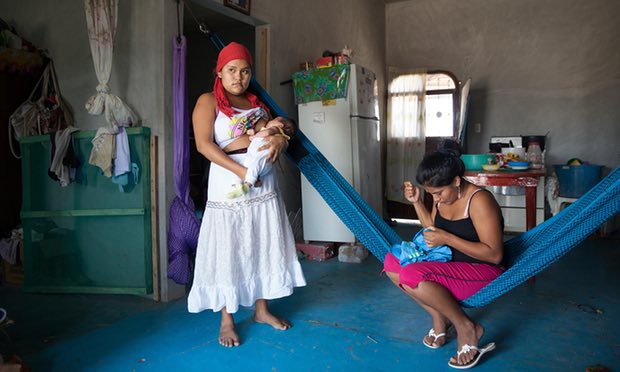Hundreds of thousands of young girls across Mexico are being driven into relationships and marriages with older men, denying them a childhood and an education, new research reveals.
Of the 320,000-plus Mexican girls between the ages of 12 and 17 who are cohabiting, nearly 70% are with a partner who is at least 11 years their senior, according to a report commissioned by the Ford Foundation.
The data represents part of a wider trend across Latin America, the only region in the world where child marriage is increasing rather than in decline.
Researchers found that 83% of married girls had left school, with the number rising to 92% among those living informally with a man. In contrast, just 15% of Mexican girls not in such relationships dropped out of school.
The findings, due to be published next month by a Mexico City-based research group, also show that 25,000 girls aged between 12 and 14 are living in “early unions”.
The report comes weeks after the secretary general of the Organization of American States, Luis Almagro, issued a statement pledging to tackle child marriage in Latin America. “With one in five girls married or living in informal unions before the age of 18 we are losing entire generations to poverty, discrimination and violence,” he said.
In Mexico, more than 10% of girls are married under the age of 15. Worldwide, the country has the eighth highest number of child marriages (pdf).
While many girls are driven into relationships as a means of acquiring status and security – or to attempt to escape poverty and violence at home – early unions often perpetuate a cycle of abuse and deprivation rooted in gender inequality.
A law introduced in Mexico in 2014 set the minimum legal age for marriage at 18 for both men and women, but many states do not comply, or make exceptions. In some areas, civil guidance states the minimum age is 14 for girls and 16 for boys.
Neither does legislation address the larger problem of young girls cohabiting with older men in a non-formal context.
Across Mexico, 81% of marriages among girls aged 12- to 17-years-old are not recognised legally, according to the report by Investigación en Salud y Demografía (Insad).
Using data from national household surveys conducted in 2015, researchers studied girls across several age groups, either married or living with a partner. They found that most girls aged between 12 and 17 were at least six years younger than their partner or husband; 65-69% were at least 11 years younger. Less than a fifth were with a partner who was five or less years older.
Heather Hamilton, deputy executive director for the charity Girls Not Brides, said: “You have a situation where a girl is perhaps choosing to be in a union, but only because she lacks other options.
“Perhaps there is a desire to escape poverty or a violent home environment. But we don’t want a world in which girls are forced to make the least bad choice.”
Hamilton said cultural factors also contributed to the abuse of young women. “Regionally, there is a strong perception that if you have a younger woman you are more masculine. But it’s also about control – the younger the girl, the more you can control her.”
Insad’s report on early unions in Mexico (pdf) found that, even when a girl claimed to be in an early union through choice, her partner was usually the one with the power and resources. The study also concluded that “many girls enter unions not because they are pregnant but for other reasons”.
Hamilton said the data challenged the widespread belief in Latin America that teen pregnancy is behind high rates of child marriage: “The research finds this isn’t necessarily the case, at least not in half of the cases in Mexico.”
Married girls and those living with an older man are more likely than their single peers to suffer violence, sexually transmitted infections and other health complications.
While one in four girls in Mexico will enter into a union before the age of 18, the rate is more than 30% in some states, including Chiapas and Guerrero. The rate was also much higher in rural areas.
Estela Rivero, one of the report’s co-authors, said: “There is significant variation across the country. Early unions are highly prevalent and still normalized in many areas of Mexico.”
She said that, given the high number of informal unions, the government must recognize that legal restrictions on child marriage fall short of tackling the issue.
“The government must guarantee all women have access to education beyond secondary level and that girls and their families are motivated to continue with schooling,” Rivero said.
“Actions are also needed to change society’s perception of what is expected from women. Our research found many girls enter into early unions as they perceive it to be what is required of them or it is their best option to gain status in the community.”
The fact that child marriage is something more associated with Asia and Africa, means it has been difficult to engage decision-makers, said Hilary Anderson, of the Inter-American Commission of Women. “So studies like these are enormously useful because they provide concrete evidence that this really is a problem in the Americas as well,” she said.
The UN has warned that the rising rate of child marriage in Latin America – the only part of the world that has not seen a decline in the last 30 years – should act as a “silent alarm” for the region’s leaders.





